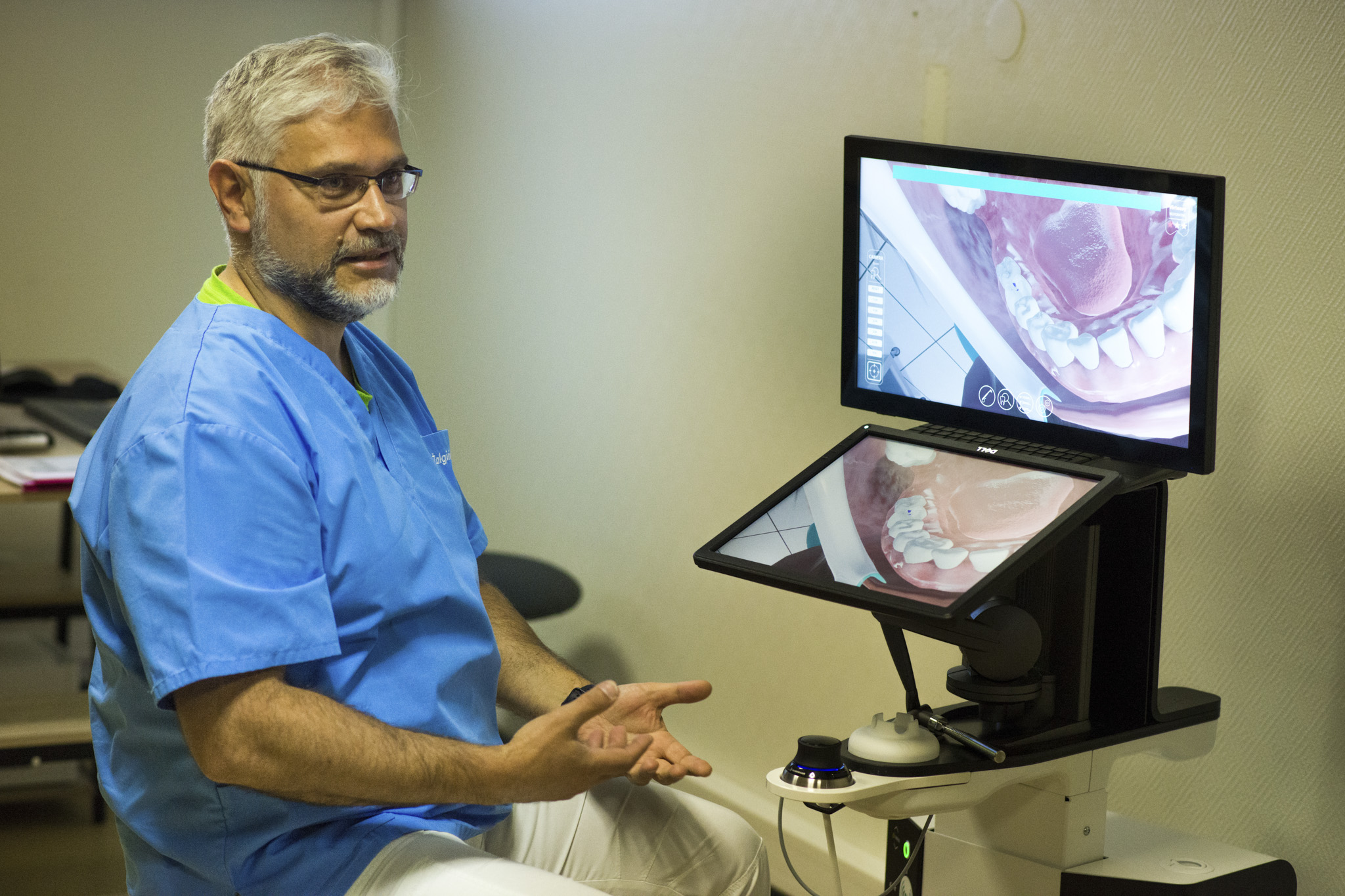
The Odontology Institute at the Faculty of Medicine uses a virtual reality simulator to train future dental professionals, which effectively allows them to prepare for working with patients and strengthen their practical skills. Using a digitized version of a real patient, these devices mean that future dentists can simulate all tooth drilling procedures, and monitor their progress.
Unlimited learning opportunities
According to the orthopaedic odonatologist Rolandas Pletkus, at the beginning, the simulation should not be too complicated, just aim to get the student involved in practice. When using the simulator for the first time, the student performs so-called warm-up exercises. “During a dental procedure, the app records how precisely the task has been performed. If the indicators on the screen are green, everything is fine, but if they are red, then the inaccuracies during the procedure are unacceptable.”
Once a student gets more experienced with the simulator, training tasks become more complex and dental procedures relating to tooth drilling begin: root canal treatment, prosthetics to restore a damaged tooth, etc. The software used in the simulators allows the lecturer to create new tasks. This means, that learning opportunities are almost limitless. It is expected that in the future, it will also be possible to use these simulators to practice dental procedures relating to soft tissue incisions.
No need for the lecturer’s presence during training
Learning using the simulator is extremely convenient because students have the opportunity to practice at a time convenient to them. The lecturer’s direct participation is not required, because the lecturer may access their own account in the system, and view all the dental work performed by a student, using the simulator, to evaluate the progress made.
According to Pletkus, one of the key advantages of learning using simulators is feedback. Students can evaluate their work and check whether they have done the job well, what areas need to be improved, and so on. All the information is provided by the simulators. “This allows the learner to rethink their work process, contributing to long-term learning. There is often no possibility to bring a patient back to repair errors. Using the simulator however, you can return to the same virtual patient again and again,” Pletkus explained.
The possibility to create a digital twin of the patient
Interestingly, the software used by the Odontology Institute allows it to utilize real-life cases for training. Using X-ray images and video material of a patient’s mouth, it is possible to create their digital twin, and then use the simulator to practice treatment. “Users of the simulators have formed a community where they share their cases and can even organize international competitions. Today, it is inevitable we engage in the modern digital world,” Pletkus noted.
He maintains that after over a year of studies, students are ready to practice using artificial teeth, and after another half a year, they can start working with patients, to perform dental hygiene and cleaning dental plaque. “This is the so-called ‘safe work’ where no harm can be caused to a patient. At the same time, students continue to practice with patients – phantoms, learning to drill and perform certain tasks.”
Photos: VU MF
